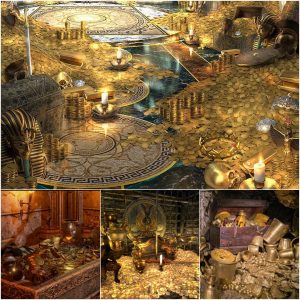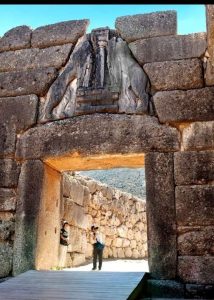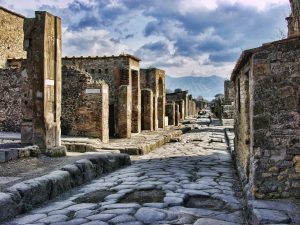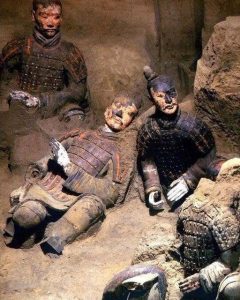Nestled in the northeastern part of the Peloponnese in Greece lies the ancient city of Mycenae, a site of monumental historical and archaeological significance. Known for its megalithic structures and rich mythological past, Mycenae offers a captivating glimpse into the Bronze Age civilization that thrived from approximately 1600 to 1100 BC. One of its most iconic features, as seen in the recent photograph, is the imposing entrance known as the Lion Gate, a testament to the grandeur and engineering prowess of the Mycenaean Greeks.
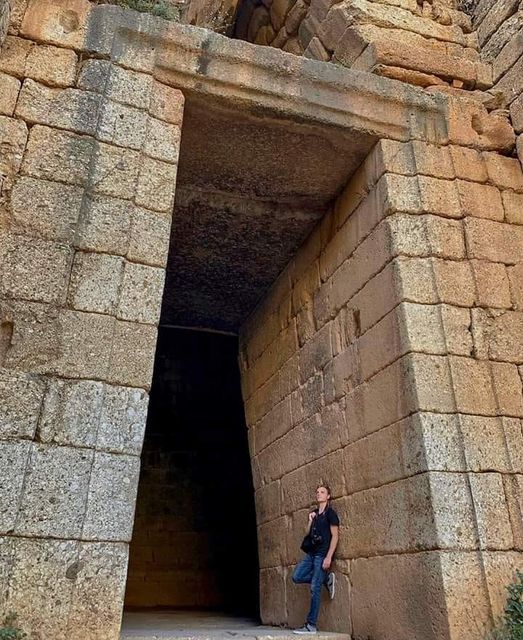
Mycenae was first excavated in the 19th century by Heinrich Schliemann, who was driven by his passion for Homer’s epic poems. He believed Mycenae to be the seat of King Agamemnon, the famed leader of the Greeks during the Trojan War. What Schliemann uncovered was a civilization of remarkable sophistication and power, evidenced by the impressive architectural remains and the wealth of grave goods found in the royal tombs.
The photograph captures the grandeur of the megalithic architecture characteristic of Mycenae. The Lion Gate, built around 1250 BC, serves as the main entrance to the citadel and is one of the most well-preserved artifacts of its time. Constructed from massive stone blocks, some weighing several tons, the gate is topped with a relief of two lionesses or lions placed in a heraldic composition, symbolizing the power and authority of the city.
The use of megaliths in Mycenaean architecture was not just for aesthetic or symbolic purposes but also had practical implications. These structures were part of defensive fortifications that protected the city from invasions and conflicts that were common in the tumultuous Late Bronze Age. The cyclopean walls, so-called because later generations believed that only the mythical Cyclops could have moved such enormous stones, surround the hilltop city, adding to its fortress-like appearance.
Inside the citadel, the remains of palatial structures, including the palace of the king, elaborate tombs, and various residential and communal buildings, offer insights into the daily life and governance of the Mycenaeans. The site also includes significant religious structures, such as temples and altars, indicating the deeply religious nature of Mycenaean society.
Today, Mycenae is a UNESCO World Heritage Site and continues to be an important focus for archaeological research and conservation efforts. Visitors to the site can walk through the same pathways that ancient Mycenaeans might have trod, standing at the Lion Gate to marvel at the engineering skills and artistic sensibilities of an ancient civilization that continues to intrigue and inspire.
Mycenae’s enduring appeal lies not only in its monumental ruins and connection to Greek mythology but also in its testament to the ingenuity of ancient societies. The megalithic structures of Mycenae, set against the rugged natural landscape of the Peloponnese, remain a powerful reminder of humanity’s quest to build, create, and remember, bridging the past and the present in the enduring story of civilization.

